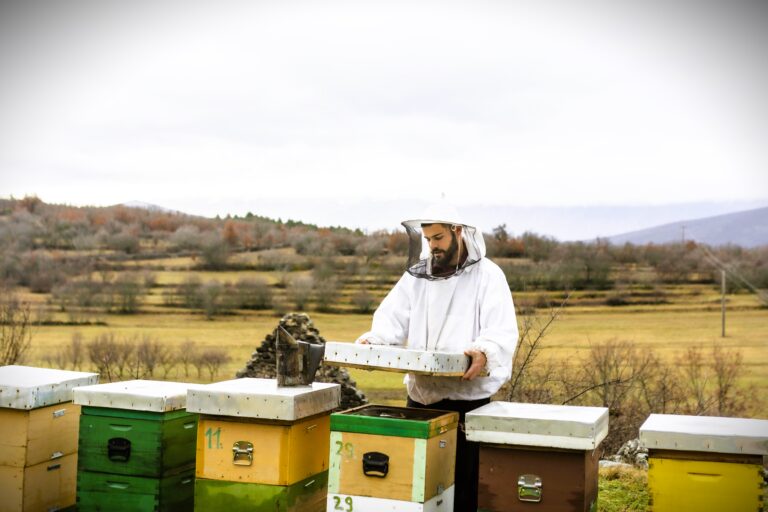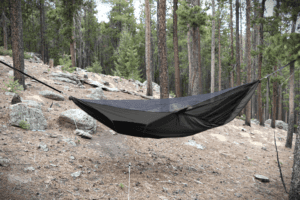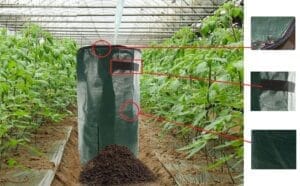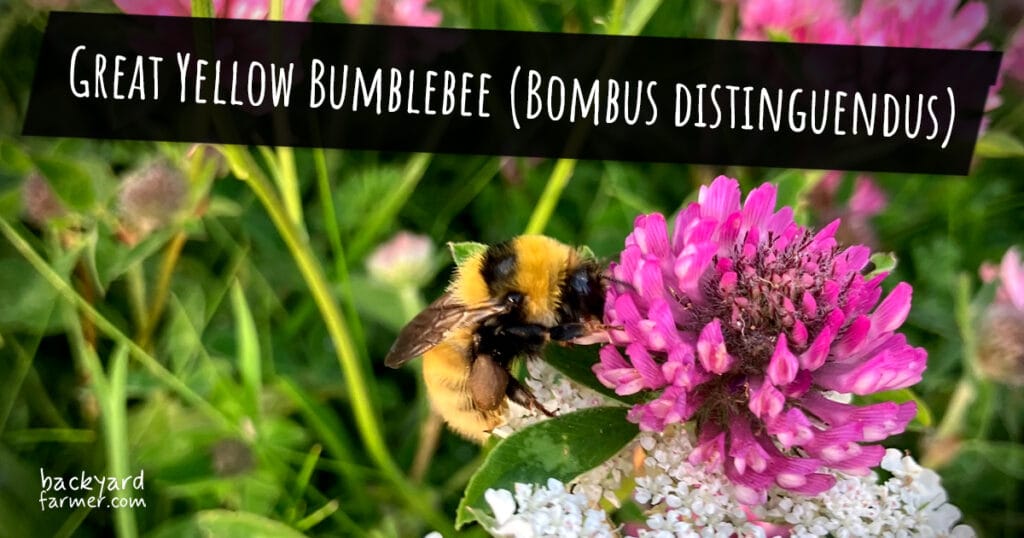Table of contents
- Introduction: Winter Bee Feeding Recipe for Healthy Hives
- Understanding Winter Bee Nutrition Needs
- Reliable Winter Bee Feeding Recipe
- Alternative Winter Bee Feeding Methods
- How to Properly Place Winter Bee Feed
- Common Mistakes & Troubleshooting
- When to Start & Stop Feeding
- FAQs on Winter Bee Feeding
- Conclusion & Final Tips
Introduction: Winter Bee Feeding Recipe for Healthy Hives
Winter bee feeding is essential for hive survival, especially as natural forage disappears and temperatures drop. Honey bee colonies rely on stored honey, but reserves often run low. That’s why beekeepers must step in with proper feeding techniques to keep their bees healthy and thriving throughout the cold months.
For a detailed guide on identifying different bee species, check out Bee Identification on The Backyard Farmer.
Why Winter Bee Feeding Matters
- Prevents starvation during harsh winters
- Strengthens the colony and promotes resilience
- Supplies essential energy for warmth and survival
- Sets the hive up for a strong start in spring
The Right Approach to Winter Feeding
Not all feeding methods are equally effective. Choosing the right winter bee feeding recipe ensures that you:
- Maintain hive health without overstimulating brood production
- Prevent excess moisture, which can lead to hive issues
- Provide balanced nutrition without unnecessary additives
What You’ll Learn in This Guide
- The best recipe for homemade bee food
- Alternative winter feeding methods
- The ideal timing and techniques for feeding your bees
By following these practical steps, you’ll help your colony stay nourished through the cold months and emerge stronger in the spring.
Read on to discover the step-by-step winter bee feeding guide and ensure your bees stay well-fed this season! 🐝❄️
Understanding Winter Bee Nutrition Needs
Winter bee nutrition is crucial for hive survival as temperatures drop and natural food sources disappear. Bees rely entirely on stored honey, but reserves aren’t always enough. That’s why beekeepers must understand proper nutrition and step in with supplemental feeding when necessary.
Why Bees Need Supplemental Feeding in Winter
Honey bees primarily depend on stored honey for nourishment. However, if their reserves fall short, supplemental feeding becomes essential. Here’s why winter feeding matters:
- Prevents Starvation – Without enough food, bees can quickly deplete their stores and die.
- Provides Energy for Warmth – Bees cluster together and vibrate their muscles to stay warm, which burns energy.
- Supports Colony Strength – Healthy winter bees ensure a strong population when spring arrives.
Key Nutrients Bees Need in Winter
To survive winter, bees require a well-balanced diet. Their main nutritional needs include:
- Carbohydrates – The primary energy source, typically supplied by honey, sugar syrup, or sugar bricks.
- Proteins – Essential for brood rearing, but excessive amounts can overstimulate the colony too soon.
- Fats & Lipids – Small amounts help sustain metabolism and colony resilience.
- Vitamins & Minerals – Naturally found in honey but can be supplemented with products like Honey-B-Healthy for extra nutrition.
How to Maintain Proper Nutrition
To keep bees healthy throughout winter, beekeepers should:
- Ensure colonies have enough stored honey before winter begins.
- Choose the right type of feed: Sugar bricks, fondant, or dry sugar are better options than liquid syrup, which increases moisture levels.
- Monitor hive weight and activity to adjust feeding strategies as needed.
By following these winter bee nutrition strategies, beekeepers can help their colonies thrive through the colder months. Next, discover the best winter bee feeding recipe to keep your bees strong and well-fed all season long!
Reliable Winter Bee Feeding Recipe
A reliable winter bee feeding recipe is essential when honey stores run low, ensuring colonies stay nourished throughout the colder months. Beekeepers must step in with supplemental feeding to prevent starvation and maintain hive strength.
This recipe provides essential nutrition for a standard colony of around 10,000–15,000 bees, helping them survive winter while minimizing moisture buildup and premature brood stimulation.
Winter Bee Feeding Recipe
Ingredients:
- 10 lbs (4.5 kg) white granulated sugar
- 1 pint (473 ml) hot water
- 1 tsp white vinegar or apple cider vinegar (optional, helps prevent mold)
- 1 tbsp Honey-B-Healthy (optional, boosts nutrition)
Instructions:
- Heat the water until warm, but do not boil.
- Gradually stir in the sugar until a thick paste forms.
- Mix in the vinegar and Honey-B-Healthy, ensuring even distribution.
- Pour the mixture into shallow trays or molds and allow it to harden into sugar bricks.
- Once solid, place the sugar bricks on top of the frames inside the hive.
Alternative Winter Feeding Methods
While sugar bricks are a reliable winter feed, beekeepers can also consider these options:
1. Fondant
- Made by boiling sugar syrup and cooling it to a soft consistency.
- Provides an easily digestible food source, particularly in colder regions.
2. Dry Sugar Feeding
- Involves placing granulated sugar on a sheet of newspaper above the frames.
- Absorbs excess hive moisture while serving as an emergency food source.
3. Winter Patties
- Made from sugar with minimal pollen protein.
- Best used sparingly to avoid stimulating early brood production.
How to Properly Place Winter Feed
- Always position feed above the cluster to ensure easy access.
- Avoid using liquid syrup in winter, as it adds moisture and can chill the bees.
- Regularly check hive weight to determine if more feeding is needed.
By using this winter bee feeding recipe, you’ll help your colony withstand harsh conditions and emerge strong in spring. Next, explore our feeding placement guide to ensure your bees can access food efficiently!
Alternative Winter Bee Feeding Methods
Winter can be tough on honey bee colonies, particularly if they don’t have enough honey stores. Several alternative winter bee feeding methods can help ensure colonies make it through the colder months when sugar bricks alone may not be enough.
1. Fondant Feeding
Fondant provides bees with an easily digestible sugar source, helping them maintain energy levels throughout winter.
How to Make Fondant:
- Ingredients:
- 4 lbs (1.8 kg) white granulated sugar
- 1 pint (473 ml) water
- 1 tsp white vinegar (prevents crystallization)
- Optional: 1 tbsp Honey-B-Healthy (adds nutrients)
- Instructions:
- Warm the water and vinegar over low heat.
- Slowly stir in the sugar until fully dissolved.
- Heat to 234°F (112°C), then remove from heat.
- Let it cool slightly, then beat until thick and pour into molds.
- Once hardened, place the fondant on top of the frames for easy access.
2. Dry Sugar Feeding
This simple, no-cook method provides food while also helping control excess moisture inside the hive.
How to Use Dry Sugar Feeding:
- Lay a sheet of newspaper over the top frames.
- Pour a mound of dry granulated sugar onto the paper.
- Lightly mist the sugar with water to help it stick together.
- This method ensures bees always have access to food while keeping hive moisture levels in check.
3. Winter Patties
Winter patties offer a carbohydrate-rich food source with a small amount of protein to sustain bees through the season.
Best Practices for Using Winter Patties:
- Use only when necessary to prevent early brood stimulation.
- Position patties directly above the bee cluster for easy access.
- Monitor hive activity to avoid overfeeding, which can lead to excess moisture buildup.
4. Candy Boards
Candy boards are a solid sugar feed placed inside a wooden frame, offering a long-lasting food source.
Why Use Candy Boards?
- Provides a steady food supply throughout winter
- Helps regulate hive moisture levels
- Convenient placement for easy access
How to Make a Candy Board:
- Mix sugar with a small amount of water until it forms a thick paste.
- Press the mixture into a shallow wooden frame and allow it to harden.
- Install the candy board above the brood chamber so bees can access it easily.
Choosing the Best Method for Your Hive
Each winter bee feeding method has its benefits, and the best choice depends on climate, hive size, and available resources. Regularly check hive weight and bee activity to adjust feeding strategies as needed.
By selecting the right winter feeding method, beekeepers can ensure their colonies remain strong and well-fed throughout the colder months.
How to Properly Place Winter Bee Feed
Knowing how to properly place winter bee feed is crucial for hive survival, as it ensures easy access and prevents starvation. Proper feed placement helps bees stay nourished without unnecessary stress while maximizing colony efficiency. Here’s how to position winter feed correctly to support your bees throughout the colder months.
1. Place Feed Directly Above the Cluster
During cold months, bees form a tight cluster to generate warmth. Placing food directly above the cluster ensures they can reach it without breaking formation, reducing the risk of exposure to the cold.
Best Placement Methods:
- Sugar Bricks or Candy Boards – Position on top of frames inside the hive.
- Fondant or Winter Patties – Lay directly over the bee cluster for easy access.
- Dry Sugar Feeding – Spread dry sugar over newspaper above the frames to absorb moisture and provide emergency food.
2. Use a Feeding Shim to Create Space
A feeding shim adds necessary space for feed while maintaining proper airflow. Consider using:
- A 1-2 inch (2.5-5 cm) wooden frame placed under the hive cover.
- A ventilated shim to help regulate airflow and prevent excess moisture buildup.
3. Control Moisture to Protect the Hive
Excess humidity can lead to mold, chilled bees, and spoiled food. To reduce moisture levels:
- Install ventilation holes or an upper entrance to allow airflow and prevent condensation.
- Place moisture-absorbing materials like newspaper or burlap near the food source.
- Avoid feeding liquid syrup in freezing temperatures, as it can increase humidity inside the hive.
4. Monitor and Adjust Feeding as Needed
Regular hive checks (when weather allows) help assess food levels and colony activity. Watch for these signs that your bees need more feed:
- The hive feels light when lifted.
- Bees cluster near the top frames.
- Visible foraging on sugar bricks or patties.
If food stores run low, promptly add more sugar bricks, fondant, or dry sugar to keep the colony well-fed.
Final Tips for Winter Feeding Success
- Start winter feeding before food reserves run low to prevent colony stress.
- Use a combination of sugar bricks, patties, or dry sugar to ensure accessibility.
- Minimize hive disturbance to retain warmth and conserve energy.
By placing winter feed above the cluster, managing moisture levels, and monitoring hive conditions, beekeepers can help their colonies survive the colder months and emerge strong in spring.
In the next section, we’ll explore common winter feeding mistakes and how to avoid them.
Common Mistakes & Troubleshooting
Avoiding common winter feeding mistakes is crucial for hive survival, as improper techniques can do more harm than good. Beekeepers must carefully monitor hive moisture, feeding amounts, and food placement to prevent starvation or colony stress. Below are some of the most frequent mistakes beekeepers make when providing winter feed, along with troubleshooting tips to keep colonies strong and healthy.
1. Overfeeding or Underfeeding
Mistake:
- Providing too much food increases moisture buildup inside the hive.
- Not supplying enough feed leads to starvation before spring.
Solution:
- Monitor hive weight and food consumption regularly.
- Use a feeding shim to create space for food while maintaining airflow.
- Provide incremental feeding instead of overloading the hive at once.
2. Using the Wrong Type of Feed
Mistake:
- Feeding liquid syrup in freezing temperatures creates excess moisture, increasing the risk of colony collapse.
- Using brown sugar or molasses introduces harmful residues that bees cannot digest properly.
Solution:
- Choose sugar bricks, fondant, or winter patties instead of liquid syrup.
- Stick to white granulated sugar to avoid contaminants.
- Limit pollen patties, as they can stimulate early brood production before forage is available.
3. Placing Feed in the Wrong Location
Mistake:
- Positioning food too far from the cluster forces bees to break formation, exposing them to the cold.
- Placing feed at the bottom of the hive can lead to increased moisture problems.
Solution:
- Always place feed directly above the cluster for easy access.
- Use candy boards, sugar bricks, or fondant near the brood nest.
- Install a feeding shim to keep food within reach and maintain airflow.
4. Ignoring Moisture Control
Mistake:
- High humidity levels encourage mold growth, chill the bees, and ruin feed.
- Lack of proper ventilation leads to condensation buildup inside the hive.
Solution:
- Add ventilation holes or a top entrance to allow moisture to escape.
- Place absorbent materials like burlap or newspaper near the food source.
- Avoid placing feed directly on the inner cover without airflow.
5. Failing to Monitor Hive Conditions
Mistake:
- Skipping winter food checks can result in starvation.
- Assuming bees are fine without periodic inspections leads to unexpected losses.
Solution:
Gently lift the hive to assess weight without opening it.
Conduct quick mid-winter checks on mild days to evaluate food stores.
Look for signs of food consumption near the cluster.
Final Troubleshooting Tips:
- If bees are clustering at the top, they may be running low on food—add more sugar bricks or patties.
- If condensation appears inside the hive, improve ventilation and add moisture-absorbing material.
- If bees are dying in large numbers, inspect for disease or mite infestations in addition to checking food availability.
By avoiding these common winter feeding mistakes and following these troubleshooting strategies, beekeepers can significantly improve colony survival rates.
In the next section, we’ll explore when to start and stop winter feeding to keep your bees nourished without overfeeding or underfeeding.
When to Start & Stop Feeding
Knowing when to start and stop feeding bees in winter is essential for maintaining a healthy colony. Feeding at the wrong time can lead to brood overproduction or starvation. A well-planned feeding schedule ensures colony survival through winter and sets them up for success in spring.
When to Start Feeding Bees for Winter
1. Late Summer to Early Fall (Preparation Phase)
- Check honey stores in late summer (August-September).
- If reserves are low, start 2:1 sugar syrup feeding to help bees build up winter food stores.
- Reduce syrup feeding by mid-fall so bees can cap their honey and prevent excess moisture inside the hive.
2. Mid to Late Fall (Final Preparations)
- Switch to dry sugar, fondant, or sugar bricks as temperatures drop below 50°F (10°C).
- Avoid liquid syrup feeding when temperatures are consistently near freezing to prevent moisture buildup.
3. Early Winter (Emergency Feeding Phase)
- Monitor hive weight in December and January to assess food levels.
- If food stores are running low, place sugar bricks or winter patties above the cluster for easy access.
- Maintain good ventilation to prevent moisture from accumulating inside the hive.
When to Stop Feeding Bees for Winter
1. Late Winter (February-March) – Transition Period
- Watch for increased colony activity on warm days—if bees are flying, they may need less supplemental food.
- Gradually decrease sugar brick feeding as natural nectar sources become available.
- Offer small amounts of pollen substitute only if early brood production is necessary.
2. Early Spring (March-April) – Natural Foraging Begins
- Stop supplemental feeding once bees actively gather nectar and pollen from blooming plants.
- If a late cold snap occurs, provide emergency sugar bricks to prevent starvation.
- Monitor hive weight and activity to ensure bees are transitioning back to natural food sources.
Final Tips for a Smooth Feeding Transition
- Always check hive weight before adjusting feeding amounts.
- Avoid introducing pollen supplements too soon, as this can trigger excessive brood production.
- Gradually phase out feeding as nectar and pollen sources become consistently available.
By carefully managing when to start and stop winter feeding, beekeepers can help their colonies survive the cold months and emerge strong in spring.
In the next section, we’ll explore FAQs on winter bee feeding to answer common concerns!
FAQs on Winter Bee Feeding
These winter bee feeding FAQs answer the most common questions beekeepers have about keeping their hives healthy through the colder months. Proper winter feeding ensures colony survival by preventing starvation and managing moisture levels.
1. Should I feed my bees in winter?
Yes, if their honey stores are low. Monitor hive weight in late fall and mid-winter to determine if supplemental feeding is necessary.
2. What’s the best food for bees in winter?
The top feeding options include:
- Sugar bricks – Easy to place and absorb excess moisture.
- Fondant – A softer, more digestible alternative.
- Winter patties – High in carbohydrates but low in protein to avoid stimulating brood production too early.
- Dry sugar – Best used as an emergency food source.
3. Can I feed bees liquid syrup in winter?
No, avoid liquid syrup when temperatures drop below 50°F (10°C). It increases hive moisture and can chill the bees.
4. Where should I place winter feed in the hive?
Always place feed above the cluster so bees can reach it without breaking formation and exposing themselves to the cold.
5. How often should I check food supplies in winter?
Lift one side of the hive every few weeks to gauge its weight. If it feels light, add sugar bricks or winter patties.
6. Can I give bees pollen patties in winter?
Avoid pollen patties too early, as they can encourage premature brood production before sufficient forage is available.
7. How do I prevent moisture buildup when feeding?
Improve ventilation by using top entrances, ventilation holes, and moisture-absorbing materials like newspaper or burlap.
8. What if my bees aren’t eating the winter feed?
If bees ignore sugar bricks or fondant, check that the food is directly above the cluster and consider switching to another feeding method.
9. When should I stop feeding bees in winter?
Reduce feeding in late winter to early spring when bees begin foraging naturally. Stop once they consistently bring in nectar and pollen.
10. What’s the best emergency feeding method?
If food stores run low, use sugar bricks or dry sugar to provide immediate nourishment without adding excess moisture.
By following these guidelines, beekeepers can ensure their colonies remain strong and well-nourished throughout winter.
In the final section, we’ll wrap up with key takeaways and expert tips to ensure winter feeding success! 🐝❄️
Conclusion & Final Tips
This winter bee feeding conclusion highlights key strategies to keep your colony strong and well-fed throughout the colder months. By using the right winter feeding strategies, you can prevent starvation, maintain energy levels, and reduce stress on the colony.
Final Tips for Winter Feeding Success:
- Plan Ahead: Assess honey stores in late summer and supplement as needed before winter begins.
- Choose the Best Method: Select a feeding approach that suits your climate and hive conditions.
- Monitor Regularly: Check food supplies periodically without disturbing the hive too often.
- Adapt as Needed: If bees cluster near the top, it may signal a food shortage—add emergency feed promptly.
By following these winter feeding best practices, you’ll help your bees emerge strong, healthy, and ready for the spring bloom.
With careful planning and consistent monitoring, your colony will have the best chance of thriving through the colder months and into a productive new season. Implement these winter feeding strategies to give your bees the best chance of survival!🐝 Happy Beekeeping! ❄️
To learn more about supporting pollinators year-round, visit the Bumblebee Conservation Trust for expert guidance on creating bee-friendly habitats.





